Как владельцам проекта Web3 следует относиться к криптомейкерам, которые «режут лук-порей»?
Original author: Will Awang, investment and financing lawyer, Digital Assets Web3; independent researcher, tokenization RWA payment
Original source: Web3 Lawyer
The myth of getting rich quickly in the crypto market exists every day. Most players come here not to double their money, but to turn over. In this dark forest, crypto market makers, as the top predator closest to money, are becoming more and more mysterious.
Price manipulation, pump and dump, and profiteering are synonymous with crypto market makers. However, before labeling crypto market makers with these “derogatory” labels, we need to face up to the important role they play in the crypto market, especially for early-stage coin listing projects.
In this context, this article will explain what market makers are, why we need market makers, the DWF incident, the main operating modes of crypto market makers, and the risks and regulatory issues from the perspective of Web3 project owners.
I hope this article will be helpful for project development, and we welcome discussions and exchanges.
1. What is a market maker?
CitadelSecurities, a leading global hedge fund, defines it this way: Market makers play a vital role in maintaining continuous liquidity in the market. They achieve this by providing simultaneous buy and sell quotes, thereby creating a market environment with liquidity and market depth that allows investors to trade at any time, which injects confidence into the market.
Market makers are crucial in traditional financial markets. On Nasdaq, there are an average of about 14 market makers per stock, with a total of about 260 market makers in the market. In addition, in markets that are less liquid than stocks, such as bonds, commodities, and foreign exchange markets, most transactions are conducted through market makers.
A crypto market maker refers to an institution or individual that helps projects provide liquidity and buy and sell quotes in crypto exchange order books and decentralized trading pools. Its main responsibility is to provide liquidity and market depth for transactions in one or more crypto markets, and to make profits by taking advantage of market fluctuations and supply and demand differences through algorithms and strategies.
Crypto market makers can not only reduce transaction costs and improve transaction efficiency, but also promote the development and promotion of new projects.
2. Why do we need market makers?
The main goal of market making is to ensure that the market has sufficient liquidity, market depth, and stable prices, so as to inject confidence into the market and promote the completion of transactions. This will not only lower the entry threshold for investors, but also encourage them to conduct real-time transactions, which in turn brings more liquidity, forming a virtuous circle and promoting an environment where investors can trade with confidence.
Crypto market makers are particularly important for early coin offering (IEO) projects because these projects need to have sufficient liquidity/trading volume/market depth in order to maintain market heat/prominence or to promote price discovery.
2.1 Providing Liquidity
Liquidity refers to the degree to which an asset can be quickly converted into cash without loss, and describes the degree to which buyers and sellers in the market can buy and sell relatively easily, quickly, and at low cost. Highly liquid markets reduce the cost of any particular transaction and facilitate the formation of transactions without causing significant price fluctuations.
Essentially, market makers facilitate investors to buy and sell tokens faster, in greater quantities, and more easily at any given time by providing high liquidity, without being interrupted or affected by huge price fluctuations.
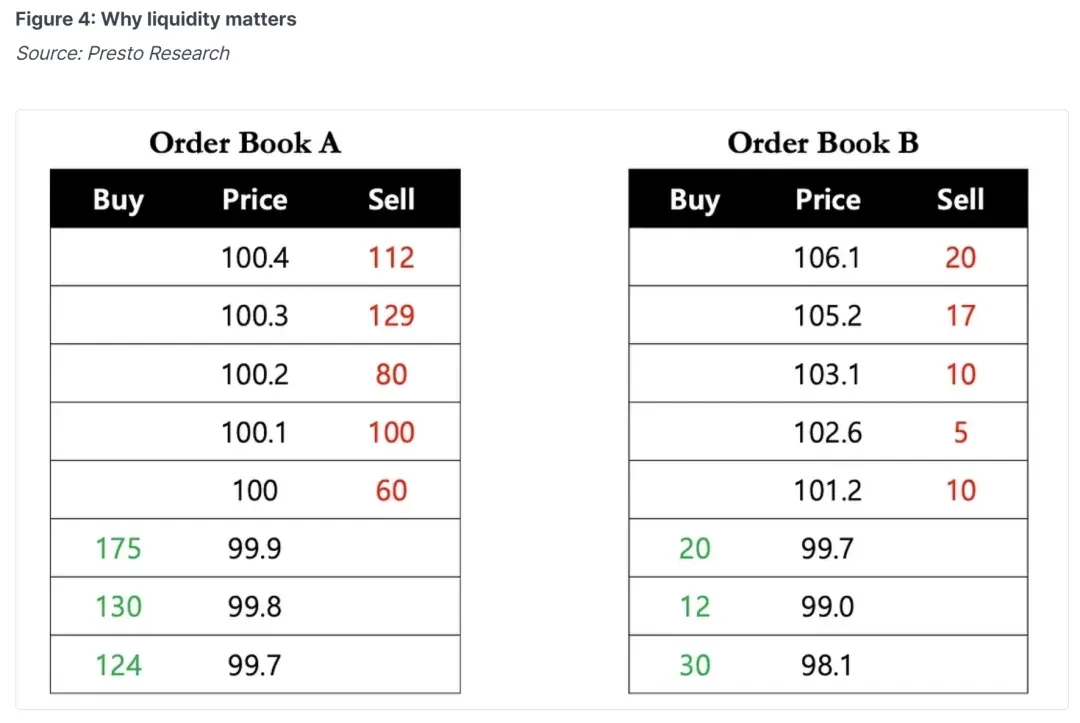
For example, an investor who needs to buy 40 tokens immediately can buy 40 tokens immediately at $100 per token in the highly liquid market (Order Book A). However, in the less liquid market (Order Book B), they have two options: 1) buy 10 tokens at $101.2, 5 tokens at $102.6, 10 tokens at $103.1, and 15 tokens at $105.2, for an average price of $103.35; or 2) wait for a longer period of time for the tokens to reach the desired price.
Liquidity is crucial for early-stage coin listing projects. Operations in low-liquidity markets will have an impact on investors’ trading confidence and trading strategies, and may also indirectly lead to the “death” of the project.
2.2 Provide market depth and stabilize currency prices
In the crypto markets, where most assets have low liquidity and lack market depth, even small trades can cause significant price changes.
In the above scenario, the next available price in order book B is $105.2 just after the investor purchased 40 tokens, indicating that one trade caused a price movement of about 5%. This is especially true during periods of market volatility, when fewer participants can cause significant price swings.
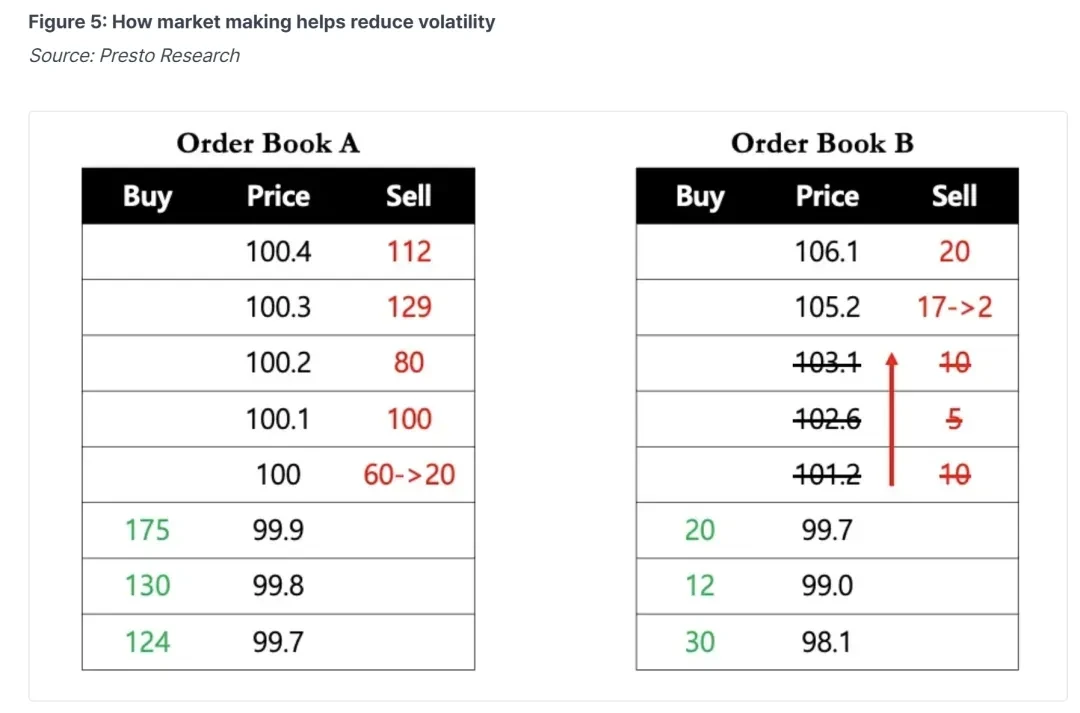
The large amount of liquidity provided by market makers creates a narrow bid-ask spread for the order book. Narrow bid-ask spreads are usually accompanied by solid market depth, which helps stabilize currency prices and alleviate price fluctuations.
Market depth refers to the available number of buy and sell orders at different price levels in the order book at a given moment. Market depth can also measure an assets ability to absorb large orders without significant price movement.
Market makers play a key role in the market by providing liquidity to bridge this gap between supply and demand. Think about which of the following markets you would like to trade?
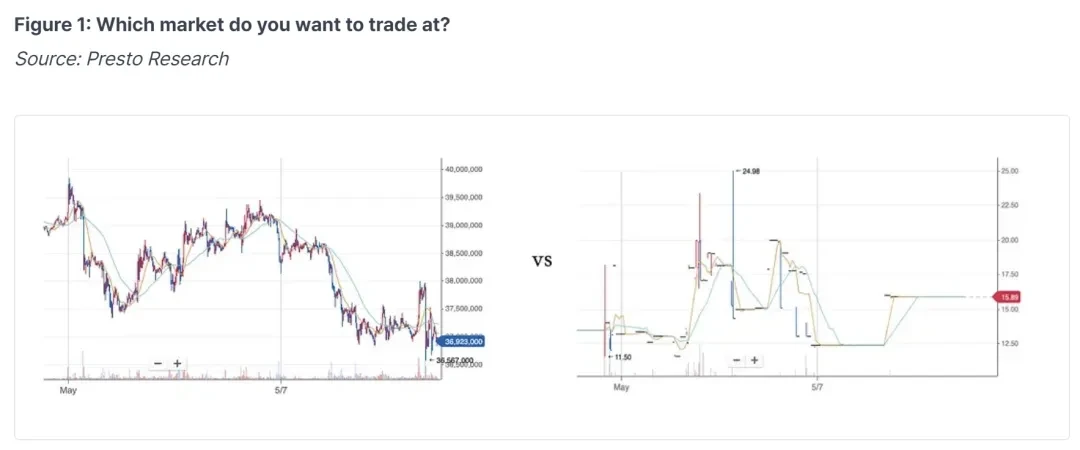
The role of crypto market makers: 1) provide a large amount of liquidity; 2) provide market depth to stabilize currency prices, which ultimately helps to enhance investors confidence in the project. After all, every investor hopes to be able to buy and sell their assets in real time with the lowest transaction cost.
3. Who are the main players in crypto market makers?
Market makers can be said to be one of the top businesses in the food chain, because they control the lifeblood of project tokens after they are launched. Market makers usually cooperate with exchanges, which can easily lead to a monopoly, and the market liquidity is dominated by several large market makers.
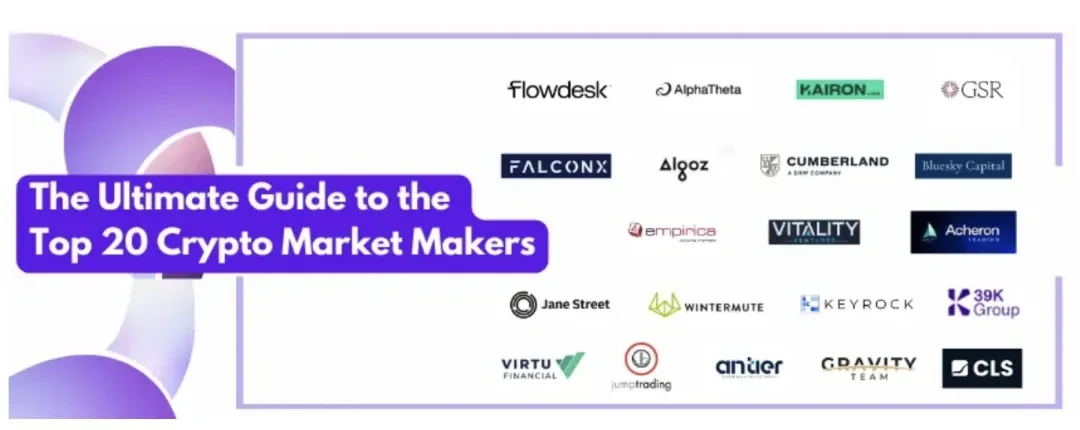
(Crypto Market Makers [2024 Updated])
In July 2023, Worldcoin, a crypto project co-created by OpenAIs Sam Altman, reached an agreement with market makers when it was officially launched. It lent a total of 100 million $WLD to 5 market makers to provide liquidity, and stipulated that the borrowed tokens must be returned after 3 months, or purchased at a price of US$2 to US$3.12.
The five market makers include:
A. Wintermute is a company registered in the UK. Its representative investments include: $WLD, $OP, $PYTH, $DYDX, $ENA, $CFG, etc. It has invested in more than 100 projects since 2020.
B. Amber Group, founded in 2017, is a Hong Kong company. Its board of directors includes institutions familiar to Chinese people, such as Distributed Capital. The team members are basically all Chinese. Participated projects: $ZKM, $MERL, $IO, etc.
C. FlowTraders, founded in the Netherlands in 2004, is a global digital liquidity provider focusing on exchange-traded products (ETPs). It is one of the largest ETF trading companies in the European Union. It has created exchange-traded certificates based on Bitcoin and Ethereum and conducts cryptocurrency ETN trading business.
D. Auros Global, implicated by FTX, filed for bankruptcy protection in the Virgin Islands in 2023. $20 million in assets were stranded in FTX, and news of a successful restructuring broke.
E. GSR Markets, founded in the UK in 2013, is a global crypto market maker specializing in providing liquidity, risk management strategies, programmatic execution and structured products to sophisticated global investors in the digital asset industry.
4. DWF Rashomon Incident
DWF Labs is the hottest Internet celebrity market maker in the market recently. DWFs Russian partner Andrei Grachev founded DWF in Singapore in 2022. According to reports, the company now claims to have invested in a total of 470 projects and has cooperated with approximately 35% of the projects in the top 1,000 tokens by market value in its short 16-month history.

Binance Pledged to Thwart Suspicious Trading—Until It Involved a Lamborghini-Loving High Roller
Lets review this event:
4.1 Breaking News
The Wall Street Journal broke the news on May 9 that an anonymous source claiming to be a former Binance insider said that Binance investigators discovered $300 million worth of fake transactions by DWF Labs during 2023. A person familiar with Binances operations also said that Binance did not previously require market makers to sign any specific agreements to govern their transactions (including any specific agreements prohibiting market manipulation to regulate their trading behavior).
This means that, to a large extent, Binance allows market makers to trade as they wish.
4.2 Marketing of DWF
Instead of adopting a price-neutral rule, DWF Labs proposed using its active trading positions to push up token prices and create so-called “artificial trading volume” on exchanges including Binance to attract other traders, according to a proposal document sent to potential clients in 2022.
In a report prepared for a token project client that year, DWF Labs even wrote directly that the agency had successfully generated manual trading volume equivalent to two-thirds of the token, and was working to create a Believable Trading Pattern that, if working with DWF Labs, could bring bullish sentiment to the project token.
4.3 Binance’s Response
A Binance spokesperson said that all users on the platform must abide by general terms of use that prohibit market manipulation.
A week after filing the DWF report, Binance fired the head of its monitoring team and laid off several investigators in the following months, which a Binance executive attributed to cost-saving measures.
Binance co-founder He Yi said: Binance has been monitoring the market of market makers, and it is very strict; there is competition among market makers, the means are very shady, and they will attack each other through PR.
4.4 Possible causes
On the Binance platform, DWF is the highest VIP 9 level, which means that DWF contributes at least $4 billion in trading volume to Binance every month. The relationship between market makers and exchanges is similar to a symbiotic relationship, and Binance has no reason to offend one of its largest customers for an internal investigator.
5. The main operating modes of crypto market makers
Like traditional market makers, crypto market makers also make profits through the spread between buying and selling. They set low buying prices and high selling prices, and make profits from the spread, which is usually called Spread and is the main basis for market makers to make profits.
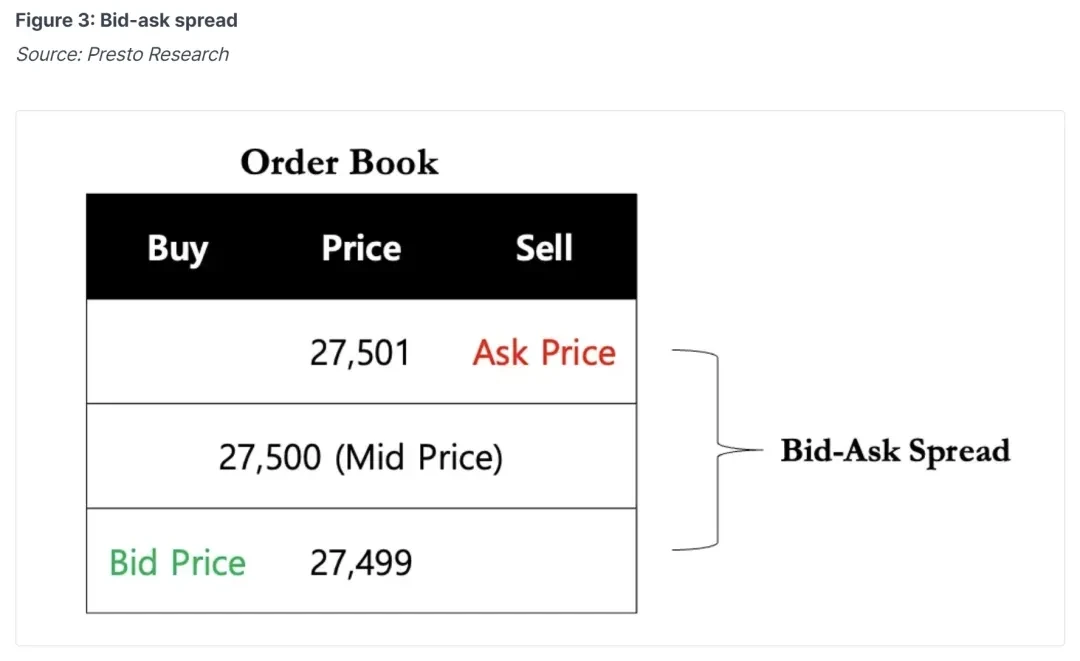
After understanding this basics, let’s take a look at the two main business models of market makers for project parties.
5.1 Subscription Service + Transaction Commission (Retainer + Performance Fee)
In this model, the project provides tokens and corresponding stablecoins to market makers, who use these assets to provide liquidity for CEX order books and DEX pools. The project sets KPIs for market makers based on their needs, such as how much price spread is acceptable, how much market liquidity and depth (Depth) needs to be guaranteed, etc.
A. The project owner may first give the market maker a fixed Setup Fee as a start-up for the market making project.
B. After that, the project party needs to pay a fixed monthly/quarterly subscription service fee to the market maker. The most basic subscription service fee usually starts at $2,000/month, and the higher fee depends on the scope of the service, with no upper limit. For example, GSR Markets charges a setup fee of $100,000, a subscription fee of $20,000/month, and an additional $1 million in BTC and ETH loans.
C. Of course, some project owners will also pay KPI-based transaction commissions (incentives for market makers to successfully complete KPI targets in the market) in order to motivate market makers to maximize profits.
These KPI indicators may include: trading volume (which may involve illegal Wash Trading), token price, bid-ask spread, market depth, etc.
Under this model, the market-making ideas are clearer and more transparent, and it is easier for project parties to control. It is more suitable for mature project parties that have built liquidity pools in various markets and have clear goals.
5.2 Token Loan + Call Option (Loan/Options Model)
The most widely used market maker model in the market is: Token Loan + Call Option. This model is especially suitable for early coin listing projects.
Since the project parties have limited funds in the early stage of listing, it is difficult to pay the market-making fees. In addition, there are fewer tokens circulating in the market in the early stage of listing, so the early tokens are lent to market makers, and the market makers will also bear corresponding risks.
In this case, it is more suitable for market makers to set their own KPIs based on the project situation. In order to compensate the market makers, the project party usually embeds a call option in the market making contract to give the market makers a hedge against token price risks.
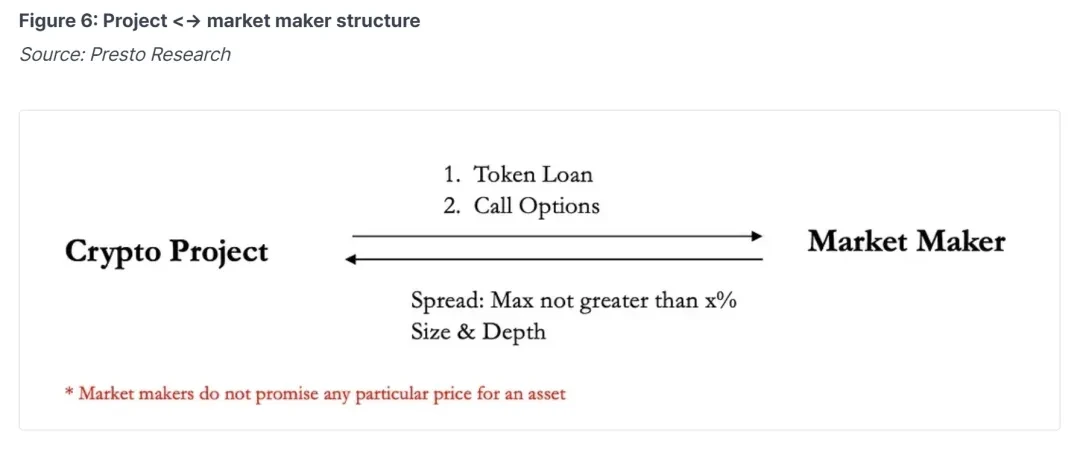
In this model, market makers will borrow tokens (Token Loan) from the project party and invest them in the market to ensure liquidity and stabilize the currency price. The market making period is generally agreed to be 1 to 2 years.
The call option stipulates that before the contract expires, the market maker can choose to purchase the previously borrowed tokens from the project party at a predetermined price (Strike Price). It should be noted that this option is an option given to the market maker, not an obligation (OPTION not Obligation).
The value of this call option is directly related to the price of the token, which gives market makers an incentive to increase the value of the token. Let’s simulate a scenario:
Lets assume that the Mfers project has found a market maker and signed a Call Option, agreeing to lend 100,000 tokens with an exercise price of $1 for a period of 1 year. During this period, the market maker has two options: 1) Return 100,000 Mfer tokens at maturity; or 2) Pay $100,000 USD at maturity (based on the $1 exercise price).
If the token price rises by 10 0x to $100 (yes, Mfers to the Moon), the market maker can choose to execute the option, that is, buy $10,000,000 worth of tokens at a price of $100,000, and obtain a 100-fold return; if the token price drops by 50% to $0.5, the market maker can choose not to execute the option ($100,000), but directly purchase 100,000 tokens at a price of $0.5 on the market to repay the loan (the value is half of the exercise value $50,000).

Because of the existence of call options, market makers will have the motivation to frantically push up the market and increase shipments to make profits; at the same time, they also have the motivation to frantically dump the market and purchase goods at low prices to repay the currency.
Therefore, in the Loan/Options Model, project owners may need to treat market makers as counterparties and pay special attention to the following:
A. The strike price and the amount of tokens borrowed by the market maker determine the profit margin and market making expectations of the market maker;
B. Also pay attention to the term (Loan Period) of this call option, which determines the market making space in this time dimension;
C. Termination clause of the market making contract, and the risk control method in case of emergency. In particular, after the project party lends the tokens to the market maker, it cannot control the destination of the tokens.
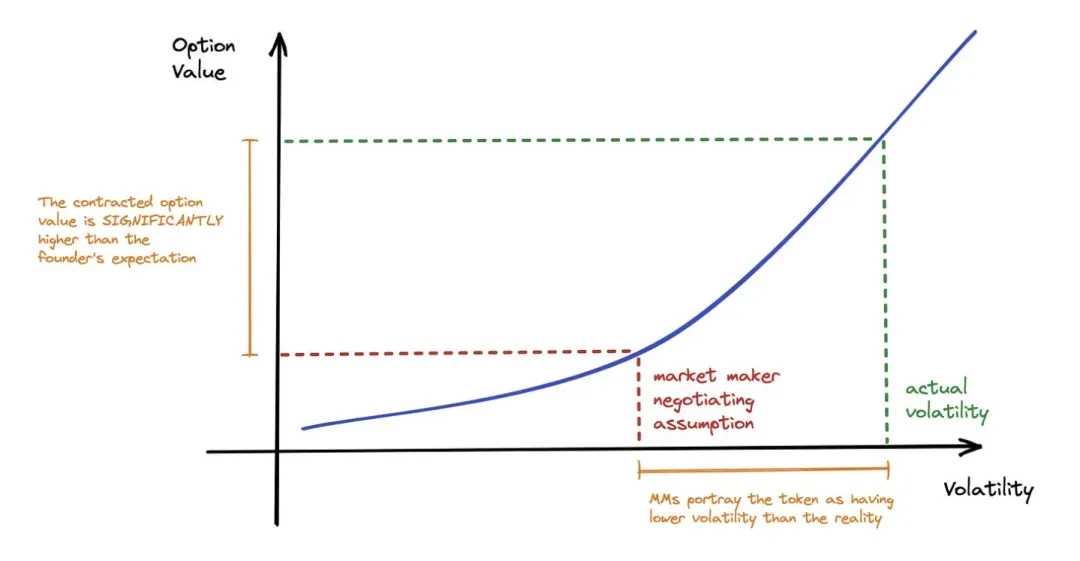
(Paperclip Partners, Founders Field Guide to Token Market Making)
5.3 Other business models
We can also see that many market makers have primary investment departments, which can better serve the invested projects through investment and incubation, and provide projects with fund raising, project promotion, coin listing and other services. In addition, owning shares of the invested projects will also help market makers reach potential customers (investment and loan linkage?).
OTC transactions are similar, where tokens are purchased from project owners/foundations at low prices and the value of tokens is increased through a series of market-making operations. There are more gray areas here.
VI. Risks and Supervision
After understanding the operation mode of crypto market makers, we know that aside from the positive significance of market makers in the crypto market, they not only cut leeks, but also the project parties are the targets of their cutting leeks. Therefore, project parties especially need to grasp the risks of cooperating with crypto market makers and the obstacles that may be caused by supervision.
6.1 Supervision
In the past, the supervision of market makers was focused on securities market makers, and the definition of crypto assets is not yet clear, which has resulted in a relative regulatory gap for crypto market makers and market making behavior.
Therefore, for crypto market makers, the current market environment is a free-for-all, and the cost of doing evil is extremely low. This is why we use price manipulation, pump-and-dump, and cutting the leeks as synonyms for crypto market makers.
We see that regulation is constantly being standardized. For example, the U.S. SEC is clarifying the definition of Broker Dealer through regulatory enforcement, and the introduction of the EU MiCA Act also includes market making business under regulation. At the same time, there are also compliant crypto market makers actively applying for regulatory licenses, such as GSR Markets applying for a major payment institution license from the Monetary Authority of Singapore (allowing OTC and market making services to be provided within Singapores regulatory framework), and Flowdesk, which completed a $50 million financing at the beginning of the year, also obtained a license application from French regulators.
However, regulation in major jurisdictions does not prevent some crypto market makers from operating offshore, as they are essentially large capital accounts within various exchanges and most of them do not have any onshore operations.
Fortunately, due to the FTX incident and the continuous regulation of major exchanges such as Binance and Coinbase, the crypto market makers that coexist with exchanges will also be restricted by the exchanges’ internal control and compliance rules, making the industry more standardized.
We do need regulation to regulate these unethical/illegal behaviors, but before the industry explodes, we may need the industry to embrace the bubble more.
6.2 Risks
Due to the lack of regulation, crypto market makers have an incentive to engage in unethical trading and manipulate the market to maximize profits, rather than an incentive to create a healthy market or trading environment. This is why they are notorious and also brings many risks.
A. Market Risk of Market Makers
Market makers also face market and liquidity risks, especially in extreme market conditions. The collapse of Terra Luna and the chain reaction caused by the collapse of FTX have led to the collapse of market makers, the collapse of leverage, and the depletion of market liquidity. Alameda Research is a typical example.
B. The project lacks control over the loaned tokens
In the token lending model, the project party lacks control over the loaned tokens and does not know what the market maker will do with the project party’s tokens, which could be anything.
Therefore, when lending tokens, the project side needs to think of the market maker as a counterparty rather than a partner, and think about the possible situations that may arise due to the price impact. Market makers can achieve many goals by adjusting prices, such as deliberately lowering prices to set a lower price for new contracts; or they may pass proposals that are favorable to them through anonymous voting, etc.
C. Unethical behavior of market makers
Unethical market makers can manipulate token prices, inflate volumes through wash trades, and engage in pump and dumps.
Many cryptocurrency projects hire market makers to boost performance metrics using strategies such as wash trading, where an entity repeatedly trades the same asset back and forth to create the illusion of volume. In traditional markets, this is illegal market manipulation that misleads investors about demand for a particular asset.
Bitwise famously published a report in 2019 claiming that 95% of volume on unregulated exchanges was fake. A more recent study from the National Bureau of Economic Research (NBER) in December 2022 found that figure had dropped to around 70%.
D. The project party that takes the blame
Since the project party lacks control over the lending of tokens and it is difficult to restrain the unethical behavior of market makers, or they have no way of knowing these unethical behaviors, once these behaviors fall into the regulatory field, the project party that actually operates the project will be blamed. Therefore, the project party needs to work hard on the contract terms or emergency measures.
7. Final Thoughts
Through this article, project parties can understand that crypto market makers have made great contributions in ensuring efficient transaction execution, enhancing investor confidence, making the market operate more smoothly, stabilizing currency prices and reducing transaction costs by providing liquidity.
However, by revealing the business model of crypto market makers, project parties are reminded of the many risks arising from cooperation with crypto market makers, and they need to pay special attention when negotiating terms and executing cooperation with market makers.
This article is sourced from the internet: How should Web3 project owners view crypto market makers who “cut the leeks”?
Original author: 0xTodd , Partner at Nothing Research (X: @0x_Todd ) The recent Re-Re-staking projects that only give Holders a small percentage of tokens may be a wrong decision. For many Re-Re-staking projects, TVL is everything to this project. If TVL is removed, all assumptions: AVS, Hub, Strategy, Liquid restaking token, L2, Restaking layer do not really exist. TVL is the real benefactor. In the DeFi Summer, $YFI distributed 100% of its tokens within a week. Yes, 100%. TVL, liquidity mining and governance each account for 1/3, which is simple, clear and effective. Everyone knows the rest of the story. In the following week, $YFI rose by 100 0x. It is undeniable that Re-Re-staking has its own innovations, but its essence is not much different from Yearn. It does not…







